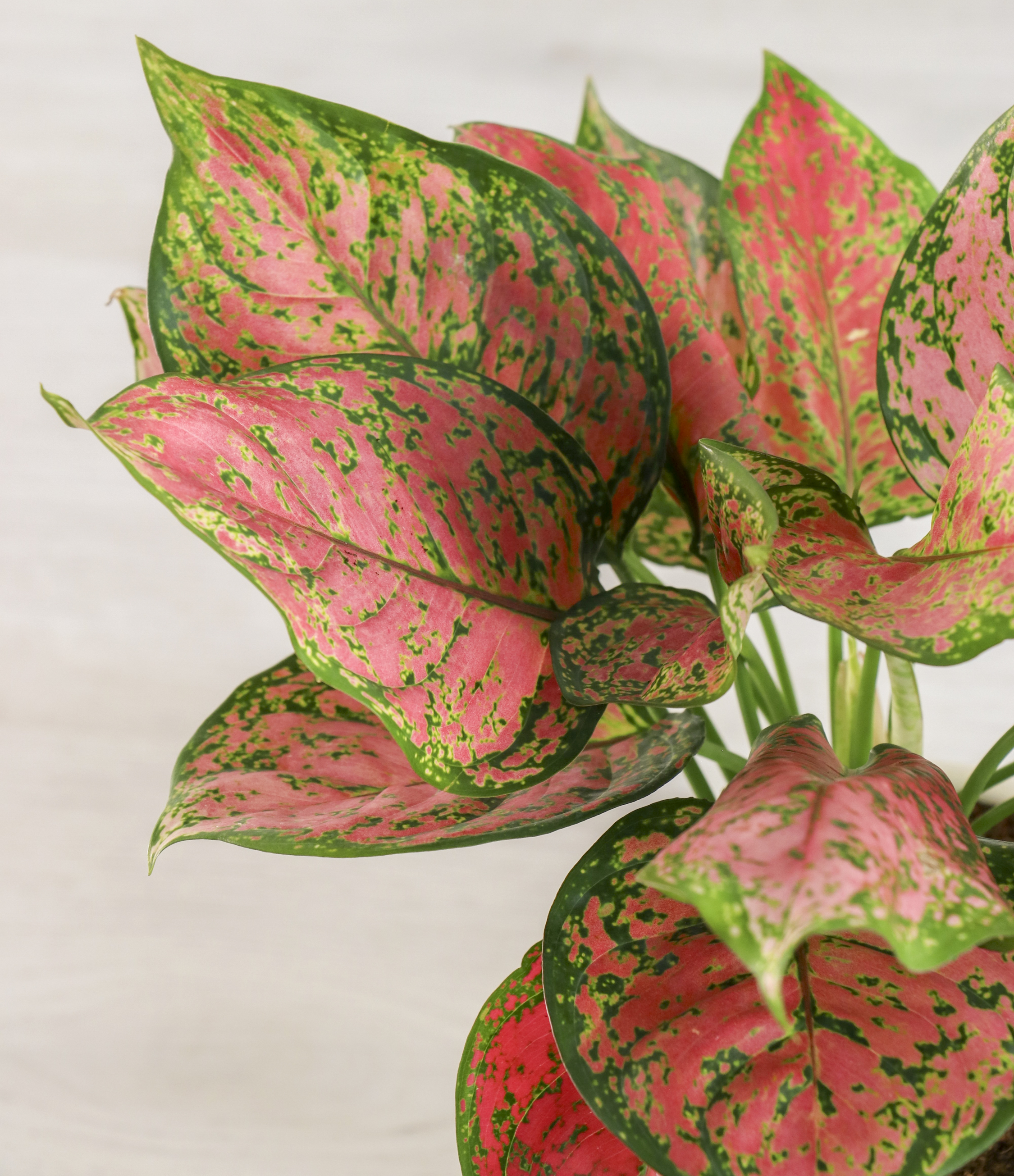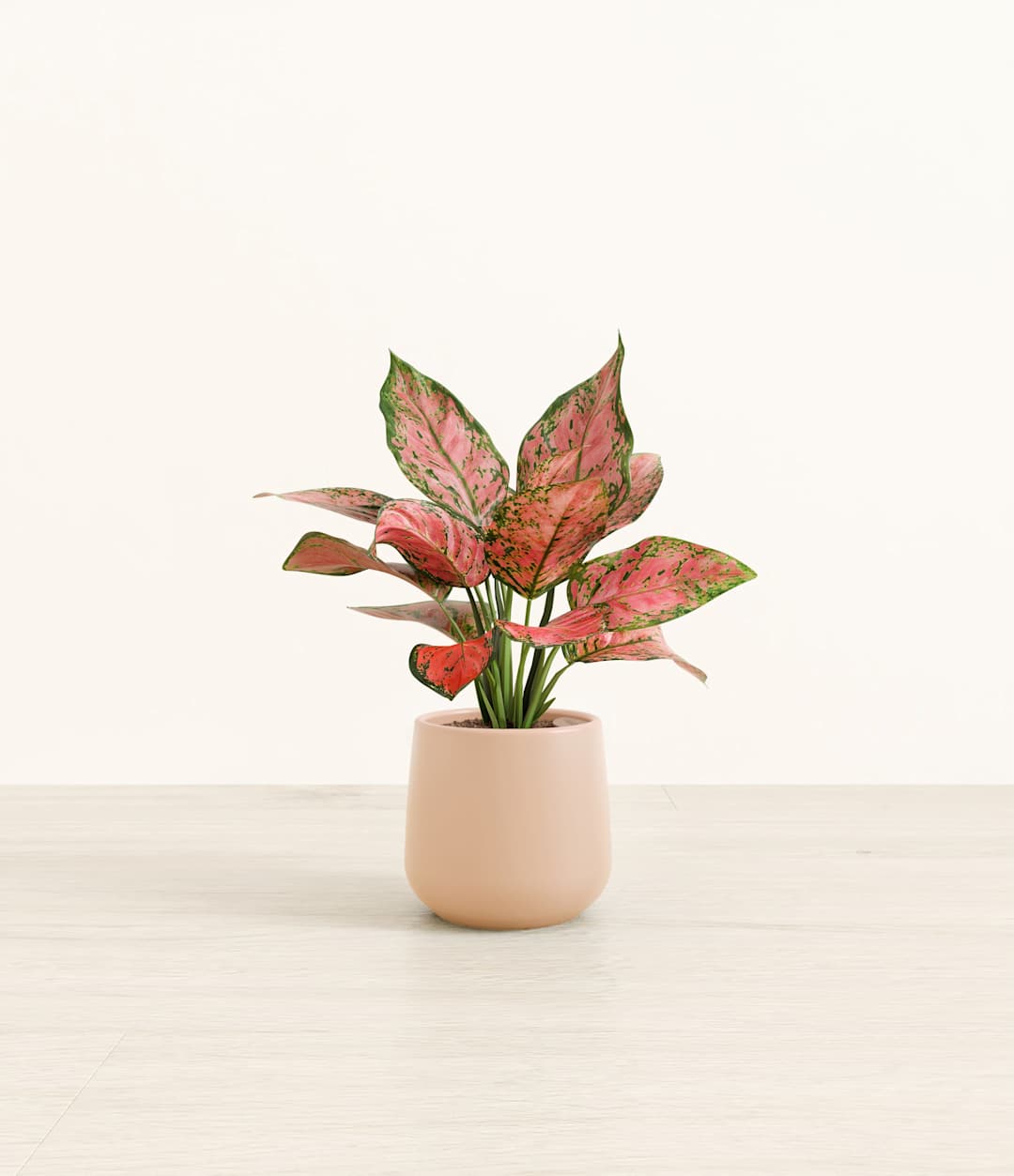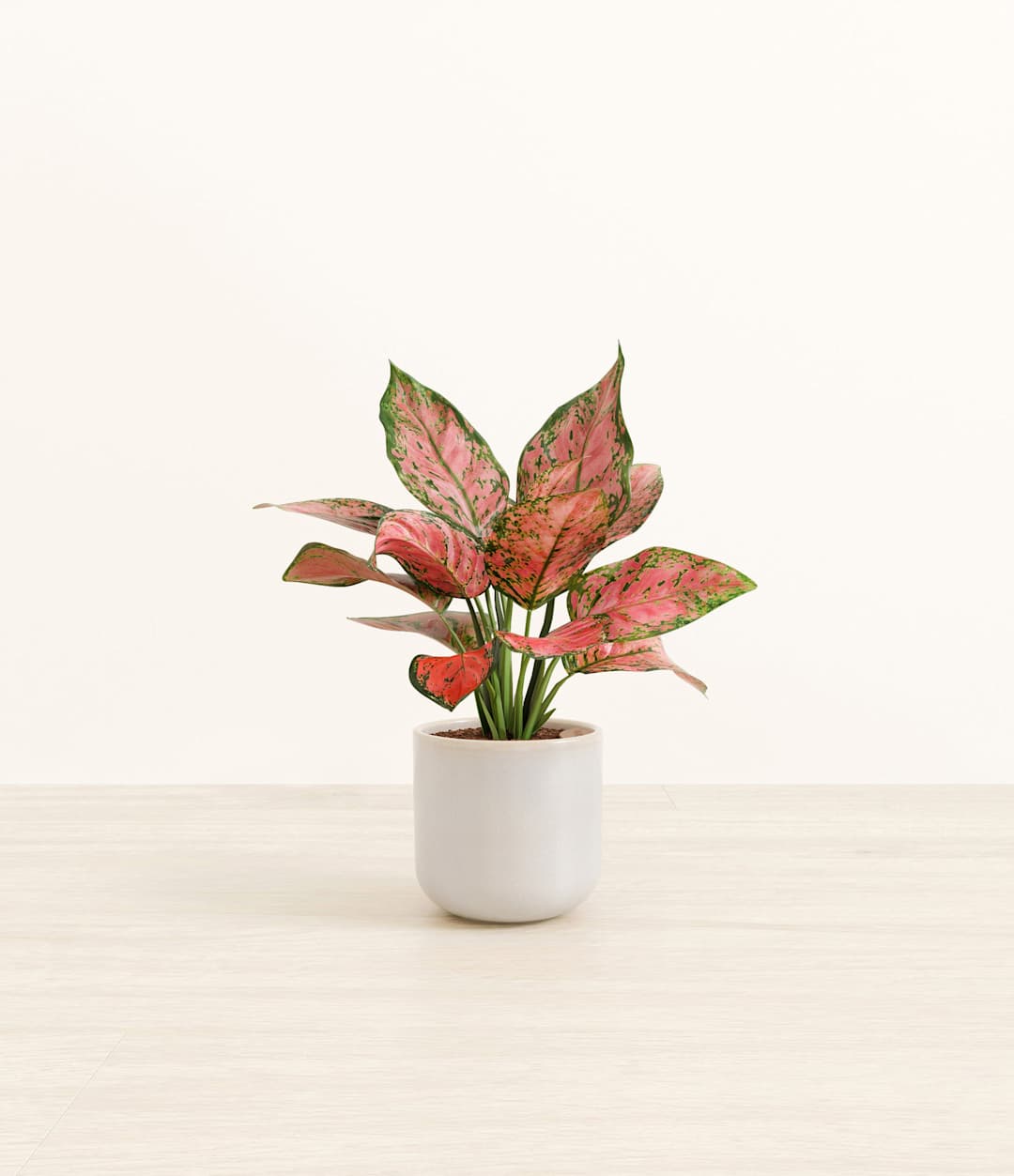How to Care for Aglaonema Beauty
Shop this plantAbout Aglaonema Beauty
Originating from Southeast Asia's tropical forests, Aglaonema Beauty, also known as Pink Chinese Evergreen, emerges as a vibrant gem that captivates with its striking pink foliage. Adorned with a rich tapestry of pink and subtle hints of green, it transforms any space into a serene haven of color. This botanical treasure is not only a visual delight but also a testament to nature's resilience, requiring minimal care and resonating with plant lovers at every skill level.
Other common names
- Valentine Aglaonema
- Red Aglaonema
- Pink Anyamanee
- Aglaonema Thai Pink
How Often Should I Water My Aglaonema Beauty?
With easyplant, watering your Aglaonema Beauty is effortless. Simply check the easyplant reservoir once a month and fill it when empty, and you're all set!
Aglaonema Beauty Light Needs
Aglaonema Beauty grows best in a space with bright indirect light, where the sun rays are diffused. Avoid placing it in spaces with low light, direct sunlight or spaces without natural light.
To prevent leaf burn, avoid direct sunlight. An ideal location would be near an east-facing window or a spot with filtered light from a west or south-facing window.
Aglaonema Beauty Plant Care
When you first unbox your Aglaonema Beauty, you might notice the leaves looking a bit droopy or sad. This is quite normal and simply reflects the plant's adjustment to a new environment after being confined in a box. Give it a little time to perk up as it acclimates to its new home. The Aglaonema Beauty is admired for its striking foliage, featuring a lush green base beautifully variegated with lighter green or creamy patterns. To encourage symmetrical growth, rotate the pot a quarter turn each month. This ensures every side of the plant receives an equal amount of light, fostering balanced growth and maintaining its stunning appearance. Regular maintenance of the leaves is also crucial. Gently wiping them with a soft, damp cloth not only keeps your plant looking its best but also aids in efficient light absorption, vital for its health and vitality. This care routine ensures your Aglaonema Beauty remains an attractive and vibrant presence in your indoor plant collection. By following these simple care steps, your Aglaonema Beauty will swiftly recover from its initial droopiness and thrive, adding a splash of tropical elegance to your space.
How Big Will My Aglaonema Beauty Grow?
Aglaonema Beauty has a compact and bushy growth habit, usually reaching around 2-3 feet in height and width. Its growth rate is moderate, making it suitable for various indoor spaces without the concern of rapid overgrowth.
Temperature & Humidity
Aglaonema Beauty enjoys typical indoor temperatures between 65°F and 76°F (18°C – 24°C). Avoid cold drafts as it prefers a stable, warm environment. While adaptable to average indoor humidity, it appreciates a bit more moisture in the air, achievable through grouping with other plants, using a humidifier, or placing a pebble tray with water next to it.
Is Aglaonema Beauty Toxic for Pets & Kids?
The Aglaonema Beauty contains substances that can be harmful if ingested by pets or children. Ingestion may result in mild skin and oral irritation, slight swelling, or difficulty swallowing. Although this plant adds a beautiful touch to any area, it's important for the safety of your loved ones to place it out of easy reach of inquisitive pets and children.
Troubleshooting Common Problems with Aglaonema Beauty
If you notice the lower leaves of your Aglaonema Beauty turning brown, don't worry too much. This is a natural process of aging. Simply wait for these leaves to loosen naturally, then carefully remove them to make way for new growth. If you see spots, yellowing, or find the stems becoming dry, it could be a sign of pests or disease. Keep the foliage clean by wiping it regularly with a damp cloth to prevent these problems. This not only keeps pests at bay but also ensures the plant can photosynthesize more efficiently. In case the leaves start showing signs of scorching or curling, it might be receiving too much direct sunlight. Aglaonema Beauty prefers bright, indirect light, so relocating it to a spot with diffused light could be beneficial. Regarding watering, it's important to allow the top layer of soil to dry out between waterings, especially if you’re not using an easyplant pot. Overwatering can lead to root rot, a common problem in houseplants. Be particularly mindful of this during the less active growing season in winter. Remember, your Aglaonema Beauty might take a bit of time to show you exactly what it needs. With a little observation and care, you can easily troubleshoot these common issues and keep your plant looking its best.
Frequently Asked Questions about Aglaonema Beauty Plant
- What type of light does Aglaonema Beauty need?
Aglaonema Beauty thrives in bright, indirect light. It is quite adaptable and can also grow well in medium to low-light conditions. To maintain its vibrant foliage, avoid placing it in areas with prolonged direct sunlight.
- Is Aglaonema Beauty toxic to pets and kids?
Yes, Aglaonema Beauty is toxic if ingested, potentially causing irritation in the mouth and digestive upset. It's best to keep this plant out of reach of pets and small children to avoid any accidental ingestion.
- How often should I water my Aglaonema Beauty?
With easyplant, just fill the reservoir once a month for optimal watering. Without easyplant, water your Aglaonema Beauty every 1-2 weeks, checking that the top inch of soil is dry before each watering.
- How to troubleshoot problems with Aglaonema Beauty?
If you encounter issues with your Aglaonema Beauty, start by checking the light and water conditions. This plant prefers indirect light and evenly moist soil. Yellowing leaves often indicate overwatering or too much direct sunlight, while curling leaves can be a sign of under-watering or low humidity.



